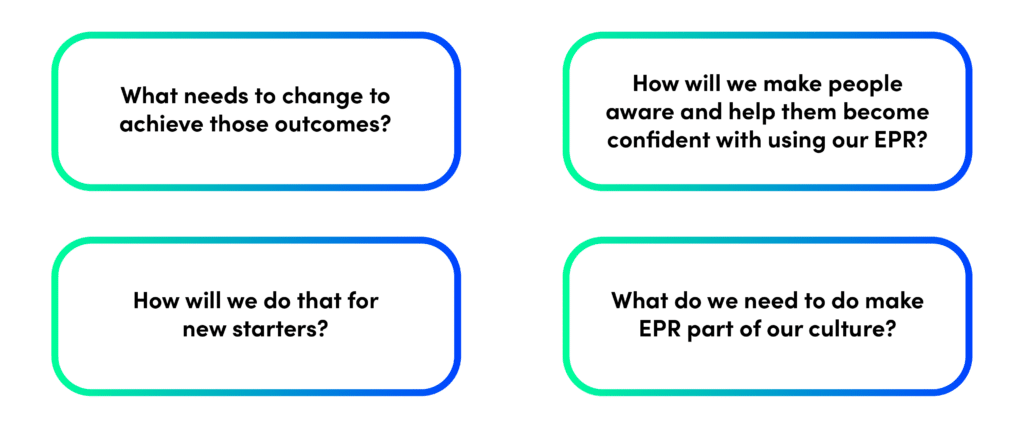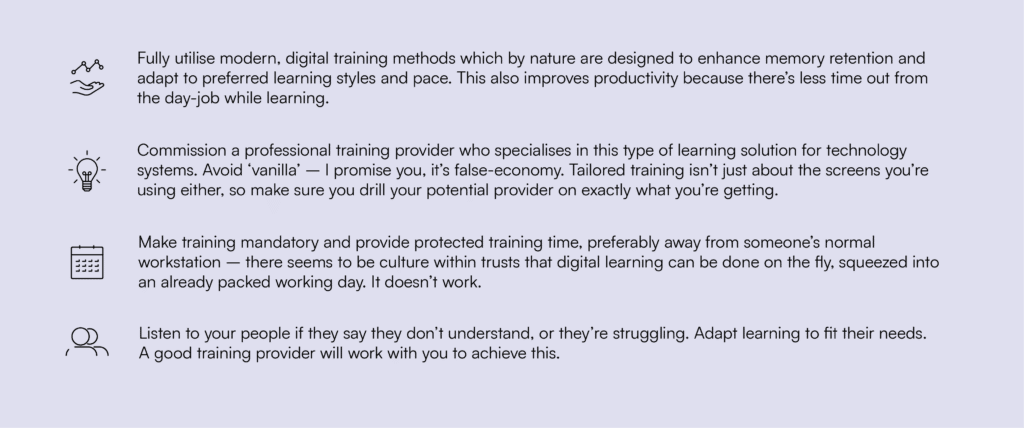The move to electronic patient records (EPR) is a huge shift for any workforce and many trusts openly admit the scale of the change has been, and still is, extremely challenging.
Before Christmas, the Government announced that 90% of trusts had adopted EPR ahead of the December target date, giving the impression the hard work had been done. But most trusts – 90 to 70% according to the Digital Maturity Assessment – have yet to utilise the full functionality of their EPR systems. So, there’s still a huge mountain climb. Given the other pressures the NHS is facing and this being election year, it looks set to be a very tough climb indeed, despite budget promises.
Many trusts are yet to reap the benefits promised from their move to EPR, including everything associated with improved data, and there’s evidence emerging that return on investment is lacking, or at best very slow.
If you doubt how serious this all is, you only have to look at the recent high-profile, headline-grabbing announcements of failed implementations. I commend the Royal Surrey for their transparency and for talking openly about issues with functionality in their system and getting users sufficiently trained and confident in using it correctly. The outcomes are a sobering lesson for anyone involved in an EPR implementation and one from which others can learn.
When it comes to implementing or optimising your EPR, I’d always recommend focusing on outcomes, not functionality – what do you want to achieve and for whom? Be really honest in your answers. Then ask yourself:

Remember you don’t have to be all things to all people – get external help where you need it.
To drive adoption and maximise productivity, I recommend you:

“But that’s expensive”, I hear you cry. Not really – consider the total cost of training, not just the initial outlay. One day’s classroom training can convert to as little as two hours digital. Now scale that across the training programme for your entire workforce and you will see this has immense productivity benefits. Now think about all the people who’ll join your organisation after you’ve gone live – new starters, agency and bank staff. There will be no extra cost involved if you build this into planning now. If you’ve got everything you need in role-based learner pathways, you can build that into inductions and onboarding programmes. Plus, you can evidence progress and outcomes and that’s going to become increasingly important as governance and accountability grow.
If your EPR implementation has stalled, and especially if you think the mountain is too big to climb right now, take heart. It doesn’t have to feel this way and we can help.
Me Learning worked with Northumbria police to provide training to support the roll out of a new command and control room technology solution, another high-pressured environment providing vital services to the public. We helped them to reduce the training timeline from 18 months to six months – a 75% reduction in training time for 4,000 people. In a trust providing community services in North West London, our training helped improve data accuracy and a reduction in data errors. In Derbyshire we supported an EPR optimisation programme that streamlined working practices across eight sites, ensuring consistency of service wherever a patient presented.
If you would like to find out more about how Me Learning has helped other organisations optimise their technology systems through effective, digitally led learning, feel free to send an email to Shirley.berry@melearning.co.uk or take a look at our website, www.melearning.co.uk.
